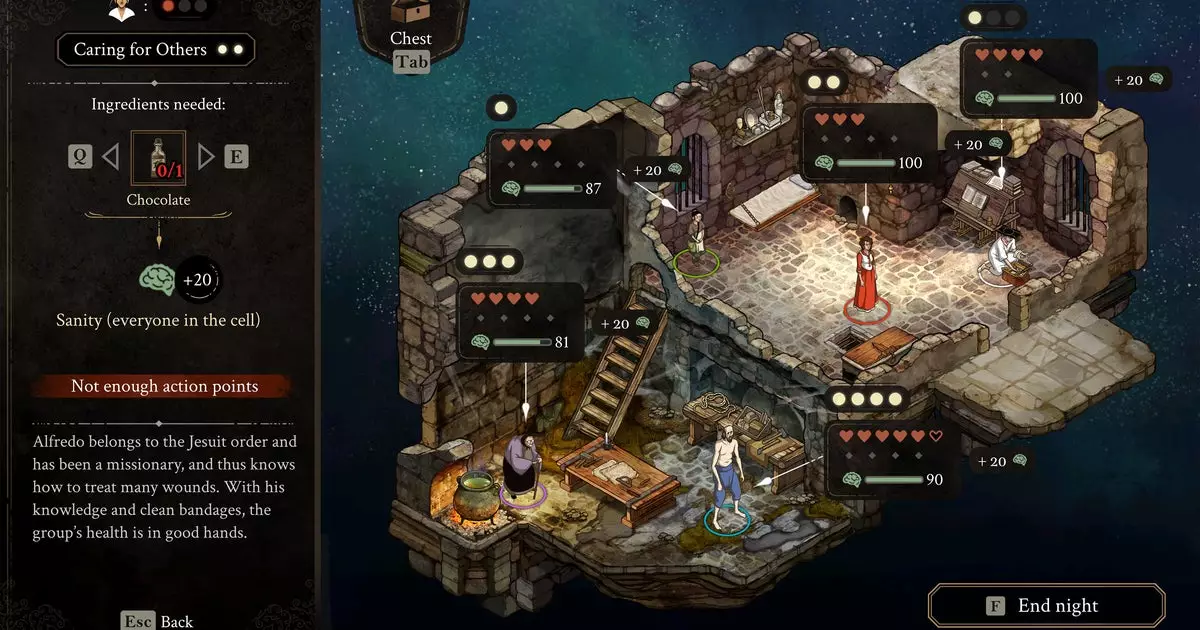Today marks the launch of The Game Kitchen’s intriguing new title, *The Stone of Madness*, an isometric tactical stealth game steeped in the ambiance of an 18th-century monastery. At first glance, calling it merely an “isometric tactical stealth game” feels inadequate. This stunning visual experience immerses players in a darkly surreal world filled with disturbing Catholic imagery, patrolled by menacing guards and supernatural entities. The distinctive blend of history, horror, and strategic gameplay is what sets this game apart in a crowded gaming landscape, inviting players to maneuver through a labyrinth of psychological and tactical challenges.
Unlike traditional models, such as *Commandos*, which allow players to engage with a straightforward set of characters defined by skill roles, *The Stone of Madness* introduces the concept of sanity and psychological dynamics into character management. Each member of your team possesses a sanity bar, reflecting their mental state and impacting gameplay significantly. Instead of relying solely on skills, players must navigate the mental stability of characters, leading to a game where success hinges on managing both tactical acumen and the psychological fallout of the characters’ experiences. This innovative mechanic augments the stakes, forcing players to consider not only their strategic options but the emotional and psychological toll on their team.
The game’s thematic layers extend beyond superficial gameplay dynamics, inviting philosophical exploration. Drawing upon the ideas of theorist Michel Foucault, who posited the historical influence of monastic order’s time-keeping practices on modern societal structures, the game stages various challenges in line with a precise day-night cycle. Each hour presents unique opportunities and threats, mirroring Foucault’s description of monastic life as a meticulous, regimented system. The game’s design resonates with the idea of “monastic time” as a conceptual framework, suggesting that time is an essential component of both narrative and interactivity.
*The Stone of Madness* finds additional context in its lineage, a spiritual successor to earlier works such as *The Abbey of Crime*, which echoes Umberto Eco’s *The Name of the Rose*. This legacy not only enriches the narrative depth but also fortifies the connection between the game’s orchestration of time and the historical richness of monastic life. The game mirrors this literary heritage by transforming it into an interactive experience, where temporal management becomes a core mechanic rather than a mere backdrop.
As the gaming community engages with *The Stone of Madness*, discussions surrounding its interplay of time, sanity, and strategy will undoubtedly evolve. The implications of “monastic time” and its potential parallels with other gaming genres are ripe for exploration. Rather than viewing games merely as a form of entertainment or employment, perhaps games like this prompt us to consider deeper narratives about human experience, psychological trauma, and the philosophical implications of time. For now, *The Stone of Madness* appears to be a captivating endeavor that warrants thorough exploration, leaving players with much to ponder as they delve into its eerie depths.

